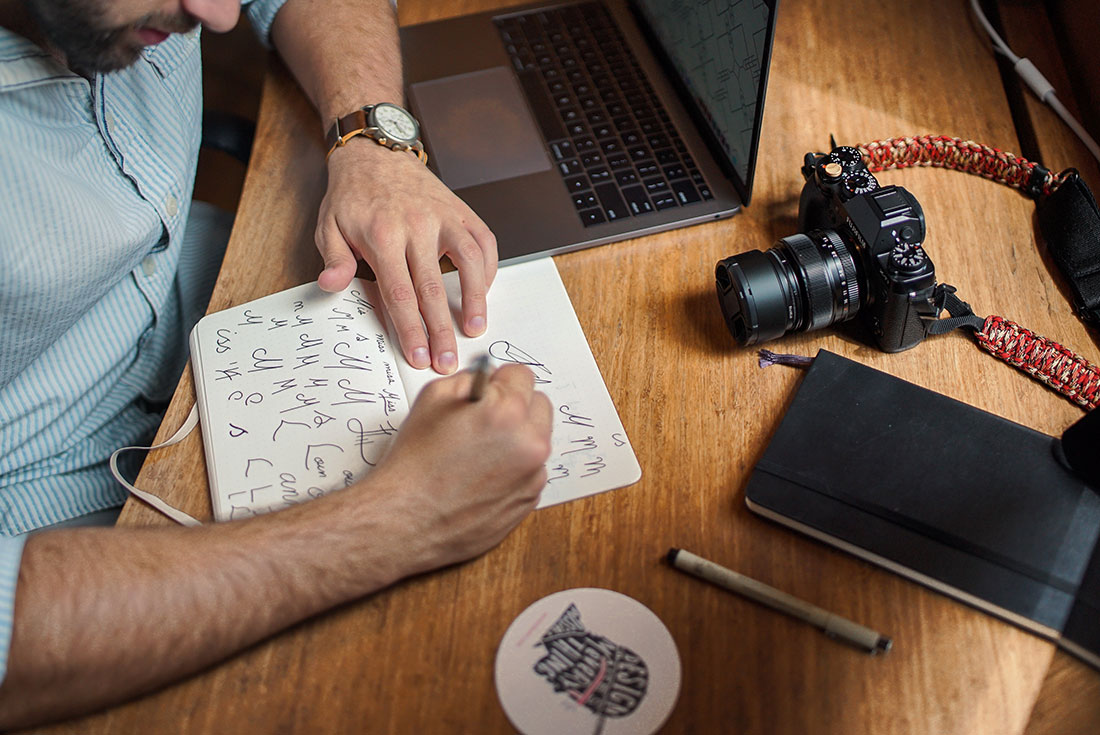
There is a wide variety of factors that come together to contribute to the success or failure of a startup. With so many things to tend to on fronts as diverse and as demanding as business strategy, bureaucracy, marketing, and not to mention the concrete work of a startup, some things will inevitably get overlooked.
One aspect that often gets neglected, and yet represents one of the crucial markers for the success of a business venture is the development of a distinct brand identity that resonates with the public. With startups, as businesses without any previous track record or reputation, first impressions are often key and a striking visual identity is the first step to drawing attention.

Why visual identity matters
In the age of digital communication, visual cues and messages play an ever-increasing role. With average attention spans growing shorter by the day, the significance of a strong visual impression cannot be overstated.
Corporate communication has become so entangled with the world of graphic design that a heavy emphasis on the area of corporate branding is placed at some of the most prestigious contemporary educational programs, such as Milan's RM Istituto and their current master course in visual design, which dedicates a full month's worth of lectures to branding as giving shape to ideas.
In short, your visual brand identity is both the extension and the reflection of your business. It sets the tone and communicates to the broader public the way you perceive yourself. Having a strong visual identity that sets you apart from your competitors is a big step towards achieving future success.

Principles of strong brand identity
Not all of us are equally aesthetically gifted or inclined towards visual expression. Still, even if you don't have interest in design or the time to give it proper thought and care, it doesn't mean that you should simply leave it all to the designer. After all, you have started the company and you are the only person that fully understand its values and goals. The designer's work needs to be informed by those goals and values, and you should take an active part in the development of what will become the visual representation of your company.
The key thing to understand is that brand identity is not just about a pretty logo and a catchy tagline - it is about the entire body of your visual communication with the public across all chosen channels, whether physical or digital. If it all seems a bit overwhelming, you should definitely hire professionals to handle this part for you, but you should remain very involved in the process and guide them to the desired results.
There are countless factors, big and small, that affect the success and the quality of the visual identity of a business, and a lot of it depends on the specific nature of work, but you can distill the essential steps in the process of defining a visual brand. If you do good work with these steps, chances are your visual identity will develop in the right direction.
Define your value: the first step on the path to establishing a brand identity is understanding the value of your work. What is it that you do? How are you doing it better than your competitors? Does your product or service bring innovation and improve the existing offer? Recognizing the key strengths of your work will go a long way in figuring out how to best communicate them visually.
Define your audience: the way you communicate with the public should be greatly influenced by the characteristics of the target audience you are trying to reach. There are significant differences in how you would approach people depending on their age, sex, social status, profession, location, to name just a few important factors. It is important to know your audience in order to address it in the best manner possible. If you're uncertain about this, simply take a look at your competitor's social media pages to get a sense of who they're talking to.
Define your personality: think about the values that you'd want associated with your business. Would you like to be perceived as creative and playful, or perhaps professional and responsible, or maybe stylish and elegant, modern, youthful, experienced, caring, etc. These choices will greatly determine a number of stylistic choices in the formation of your visual identity.
Tell a story: the best way to make audience engage with businesses is to provide a relatable narrative. In order for brand identity to work, a business cannot be seen as an abstract entity. It needs to carry a certain attitude or a spirit, convey a certain message, and reinforce a certain lifestyle. It is up to you to align your business with a certain worldview and relate it to the public in an effective manner.
Get social: In today's interconnected day and age, businesses cannot afford to ignore the public and maintain a passive one-way communication. Today's businesses need to be open and available to the public interest, to interact and engage with the audience. Consider your website, your social media pages and any other channels of communication an extension of your visual brand identity that allows you to expand its narrative and create a strong connection between your brand, your professed values, and the public. Just make sure that your visual message is consistent across all communication channels.
Conclusion
Building a strong visual brand is a process that requires a comprehensive effort. Its success will be determined not just by your creative, professional and philosophical choices, but primarily by the quality of your work. Still, if you approach your work with passion and infuse that passion into how you communicate with the world, you are already set for success.
Guest Author

Jennifer Hahn Masterson is a seasoned freelance visual designer and digital nomad, aiming to shape and enhance the user experience through considering the effects of illustrations, typography, photography, space, colours and layouts on the usability of each product and its aesthetic appeal. When she is not busy pondering about the design principles of unity, space, hierarchy, balance, contrast, scale and similarity, she likes to immerse herself in a good book and satisfy her perpetual wanderlust. You can check her out on Twitter and LinkedIn.
